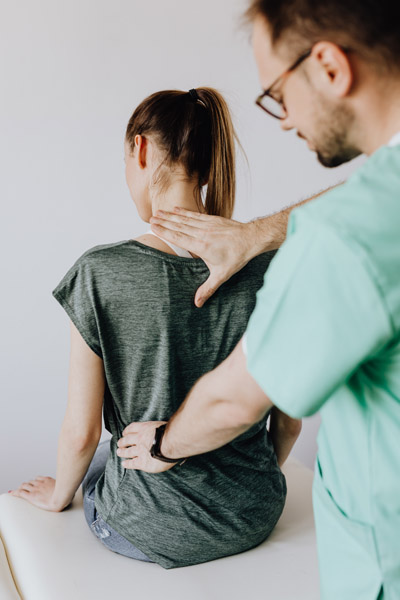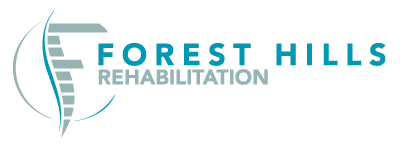The Importance of Sleep

The Importance of Sleep As your physical therapy providers, we help you relieve pain with a combination of exercises and other treatment techniques, but nothing helps muscle recovery more than rest and relaxation. We would like to take a moment to have you step back and help you reexamine the importance of sleep. Sleep is a very important part of our lives for the following reasons: 1. Learning and memory Sleep helps the brain commit new information to memory; a process called memory consolidation. 2. Metabolism and weight Being overweight can increase the likelihood of suffering from sleep disorders like apnea. On the other hand, chronic sleep deprivation may cause weight gain. That’s why the right amount of sleep is very important. 3. Mood/quality of life Lack of sleep (long- or short-term) may result in symptoms like irritability, impatience, inability to concentrate, and moodiness. In some cases, anxiety and depression are also likely to occur. 4. Cardiovascular health Serious sleep disorders like insomnia and sleep apnea have been linked to high blood pressure, increased stress hormone levels, cardiac arrhythmias, and increased inflammation. 5. Immunity/risk of disease Though all the mechanisms aren’t clear, scientists have found that sleep deprivation alters immune function. If you don’t get enough sleep, you may find yourself falling sick more often. How Much Sleep? 7 Hours or More… Sadly, we live in a sleep deprived society. Some studies suggest that 50 to 70 million Americans are affected by some type of sleep disorder. It’s likely that you need to make a conscious effort to get more (sound) sleep. The human body needs at least 7 to 8 hours of sleep every night. However, it’s not just the duration of sleep, but also the quality that matters. Lack of sleep can cause several problems. Aside from drowsiness, it can cause immune, nervous system, endocrine and cardiovascular issues. The Impact of Sleep Deprivation As your physical therapists, we want you to get the most out of every exercise routine we design for you, but adequate sleep is the foundation for recovery and strength. Sleep deprivation can set off a chain of events that can affect different parts of your life. These may include: Poor health caused by bad food choices. A study in the Journal of Clinical Sleep Medicine discovered that people, especially women, who suffered from sleep apnea tend to consume foods that are high in cholesterol, protein and fat. Impaired sugar metabolism and diabetes are more likely in those who get five hours of sleep (or less) a day. Both factors above can lead to weight gain and obesity. The incidence of car accidents increases when sleep deprived individuals are behind the wheel. Heart attacks are more likely when you sleep five hours or less. Balance problems and falls are more likely (especially in the elderly). Children who don’t get enough sleep tend to be irritable, and in extreme cases, show behavioral issues. When you get enough sleep, your body functions better. We want you to be the best you can be, physically and mentally, which is why we want you to get enough sleep. Getting enough sleep and planning an exercise program to improve your strength and flexibility will be one of the most important things you do in 2012, and we are standing by to assist you. Forest Hills Rehabilitation Our Website: http://www.ForestHillsRehab.com Phone: 718-520-8480
Treating Neck Pain and Headaches

The Neck and Headache Connection Patients with headaches also commonly complain of neck pain. This relationship is the rule, not the exception and therefore, treatment for headaches must include treatment of the neck to achieve optimum results. The term, “cervicogenic headaches” has been an accepted term because of the intimate connection between the neck and head for many years. There are many anatomical reasons why neck problems result in headaches. Some of these include: The first 3 nerves exiting the spine in the upper neck go directly into the head. They penetrate the muscles at the top of the neck near the attachments to the skull and therefore, any excess pressure on these nerves by the muscles or spinal joints will result in irritation and subsequent pain. The origin or nucleus of the 5th cranial nerve called the Trigeminal, innervates the sensation to the face and is located in the upper cervical region near the origin of the 2nd cervical spinal nerve, which innervates sensation to the back of the head up to the top. Therefore, problems located in the upper neck will often result in pain radiating up from the base of the skull/upper neck over the top of the skull to the eyes and /or face. The 11th cranial nerve that innervates the upper shoulders and muscles in the front of the neck arises from the top 5 to 7 spinal cord levels in the neck. Injury anywhere in the neck can result in spasm and pain in these large muscle groups. Other interconnections between the 2nd cervical nerve and trigeminal/5th cranial nerve include communication with the 7th cranial / facial nerve, the 9th cranial / glossopharyngeal nerve, and the 10th cranial / vagus nerve. These connections can affect facial muscle strength/movements, taste, tongue and throat movements, and stomach complaints such as nausea from these three cranial nerve interconnections, respectively. When patients seek treatment for their headaches, a thorough examination of the neck, upper back, and cranial nerves is routinely performed for the above reasons. It is common to find upper cervical movement and vertebral alignment problems present in patients complaining of headaches. Tender points located between the shoulder blades, along the upper shoulders, on the sides of the neck and particularly, at the base of the skull are commonly found. Pain often radiates from the tender point over the top of the skull when pressure is applied in the upper neck/base of the skull area. Tenderness on the sides of the head, in the temples, over the eyes, and near the jaw joint are also common. Traction or pulling the head to stretch the neck is often quite pain relieving and this is often performed as part of the chiropractic visit and can also be applied at home with the use of a home cervical traction unit. Chiropractic adjustments applied to the fixated or misaligned vertebra in the upper neck often brings very satisfying relief to the headache sufferer. Exercises that promote movement in the neck, as well as strengthening exercises are also helpful in both reducing headache pain and in preventing occurrences, especially with stress or tension headaches. courtesy: Forest Hills Rehabilitation http://www.ChiropractorForestHills.com
Back Pain Relief – New Video
Watch our new video about back pain relief on Youtube

